From emotions to excellence: Kshamtalaya’s journey of well-being
“Love and compassion are necessities, not luxuries. Without them, humanity cannot survive.” – His Holiness, the Dalai Lama. T his quote has inspired our journey in education, centering compassion as the foundation of learning. In August 2016, we began working in Bakhel. It is one of the most remote villages in southern Rajasthan, India. The […]

“Love and compassion are necessities, not luxuries. Without them, humanity cannot survive.” – His Holiness, the Dalai Lama.
T his quote has inspired our journey in education, centering compassion as the foundation of learning. In August 2016, we began working in Bakhel. It is one of the most remote villages in southern Rajasthan, India. The classrooms had high dropout rates. By grade 8, only 2 or 3 girls out of 25 students remained in school.
On that particular day, I must have looked defeated. One of the girls in my class approached me as I stood outside. She hesitated for a moment before saying something that has stayed with me ever since: “Didi, do you know why we don’t share when you ask us questions? It’s because we are not allowed to talk. I fear that if I speak, someone will tell me how wrong I am. And then everyone will laugh at me. It’s better to stay quiet than to speak and be mocked.”
Her words hit me hard. They revealed an issue deeper than just classroom participation. These reflected a culture where fear and judgment silenced young voices, especially those of girls.
For a child like that girl, the brain’s natural response is to fight or flee. But in her case, there was no room for fighting back. There was only the overwhelming urge to flee. Her mind was probably preoccupied with counting down the minutes until the bell rang, signaling her release from the classroom.
That conversation marked a turning point for me. It reminded me that creating a safe, supportive space for children to express themselves without fear of judgment is not just important. It is indispensable for learning.
The role of educators’ well-being
The pandemic of 2020 further emphasized the importance of well-being. This was not just for students but also for educators. In conversations with government schoolteachers, one expressed, “The world is appreciating doctors and police personnel. But who thinks about teachers? We have left our families to run quarantine centers, distribute food, and to adapt to online education.”
Research shows that teachers’ emotions profoundly impact their students. Through sessions with over 10,000 teachers across India, we have witnessed the transformative power of prioritizing educators’ wellbeing. One teacher, with tears in her eyes, shared, “This is the first time someone has asked about my feelings.” When teachers are supported, they can extend genuine compassion and care to their students. This leads to safer, more nurturing classrooms.
Our work focuses on making classrooms safe, nurturing and compassionate spaces. In collaboration with SCERT (State Council of Educational Research and Training) Rajasthan, in 2021, we have implemented initiatives like the Hausla Program in all the 33 districts’ DIETs (District Institutes of Education and Training). We have also contributed to the state’s curriculum framework. These interventions emphasize health, well-being, and guidance counseling. Additionally, we have developed handbooks for teachers. These include ‘Khushi Shala’ and ‘Khud Ki Khoj’. These handbooks integrate well-being into daily teaching. Kshamtalaya Foundation employs a three-pronged approach to support the stakeholders at various levels. These include the following.
Classroom demonstration models: Here we pilot methods to directly impact learning and well-being.
Local leadership: We empower local youth to lead initiatives in their communities. This takes place through internships, fellowships, and the Family Champions Program.
Systemic excellence: We also try to influence policy and scale impact. We try and do this through state-level collaborations through our work with the SCERTs in the states we work in.
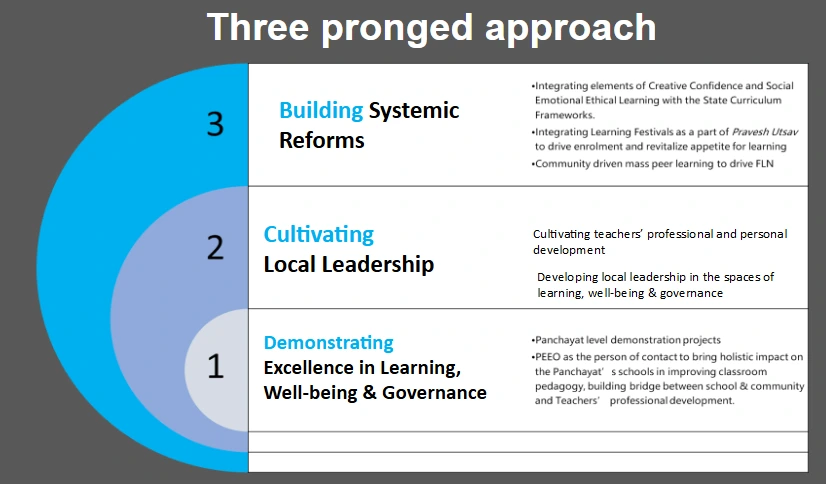
Expanding impact in Bihar
In 2022, we extended our work to Bihar through two programs. We share relevant details about these interventions below.
Mental Well-being Fellowship (Hausla Well-beingpreneurs): This program engages over 2,000 teachers. It focuses on skills like attention and awareness, emotion regulation, and community integration. Fellows undergo intensive training to facilitate well-being sessions with teachers and students.
i-Discover Fellowship: This program is modeled after its counterpart in Rajasthan. It supports integrated social, emotional and ethical learning (SEEL) in 15 schools. This is coupled with parents’ engagement, and the involvement of school management committees (SMCs).
We have scaled the Hausla 21-day Mental Well-being Program. This helps us reach 50,000 newly recruited teachers. It has now become a part of their induction training. This has taken place in collaboration with SCERT, Bihar. As of 2024, we are completing a pilot study for the Khushi Shala Khud Ki Khoj handbook. This involves 120 educators from Rajasthan’s Banswara and Sirohi districts. This initiative highlights the importance of teacher well-being.
We hope it would have ripple effects on student-teacher relationships. By 2025, we aim to scale this project. This would help in demonstrating how well-being fosters joyful and meaningful learning for both educators and students.
Students’ well-being
Through internal assessments, we have found positive shifts in children’s skills related to awareness and regulation. A story from Mau Wazidpur in Bihar bears testimony to the data.
Two best friends, Anjali and Anvigiri from Class 8, had an argument during class. Their fight escalated into anger. They ended up saying hurtful things to each other. Eventually, they stopped speaking altogether.
Their mutual friend, Suhani, noticed this. She decided to help. She brought Anjali and Anvigiri to their “Khushi Ki Potli”. This is a personal resource box. It has been created as part of the second chapter of SEE Learning curriculum’s “Building Resilience”.
Suhani asked them to open their boxes. She requested them to look at their favorite items inside. As they did, their anger faded. This was replaced by feelings of calmness. These items reminded them of the happy moments they had shared. Within a few days, Anjali and Anvigiri were friends again. They were talking, laughing and playing like before. Their bond grew even stronger.
This story highlights how students are learning to regulate their emotions, understand each other’s feelings, and practice compassion. The curriculum empowers them to lead calming practices. It also helps them choose strategies to manage emotions, and support both themselves and others.
Educators’ well-being
The most impactful initiative we have implemented for educators’ well-being is Hausla. This program has reshaped our approach to supporting teachers as individuals, not just as professionals.
Over 60% of the educators showed measurable improvement in the WHO Well-being Index. This has been alongside enhanced mindfulness and resilience. Beyond the numbers, Hausla has helped us connect with teachers on a deeply human level.
The stories teachers have been sharing with us are deeply humbling and inspiring. I vividly recall a Sunday morning when, amidst the usual messages in various groups, a teacher posted a photo of himself with his two children. They were practicing a meditative exercise from one of Hausla’s audio sessions.
That simple, personal moment moved me profoundly. It was a testament to the program’s impact. This has been both on the teacher’s professional life, and on his family and personal growth as well.
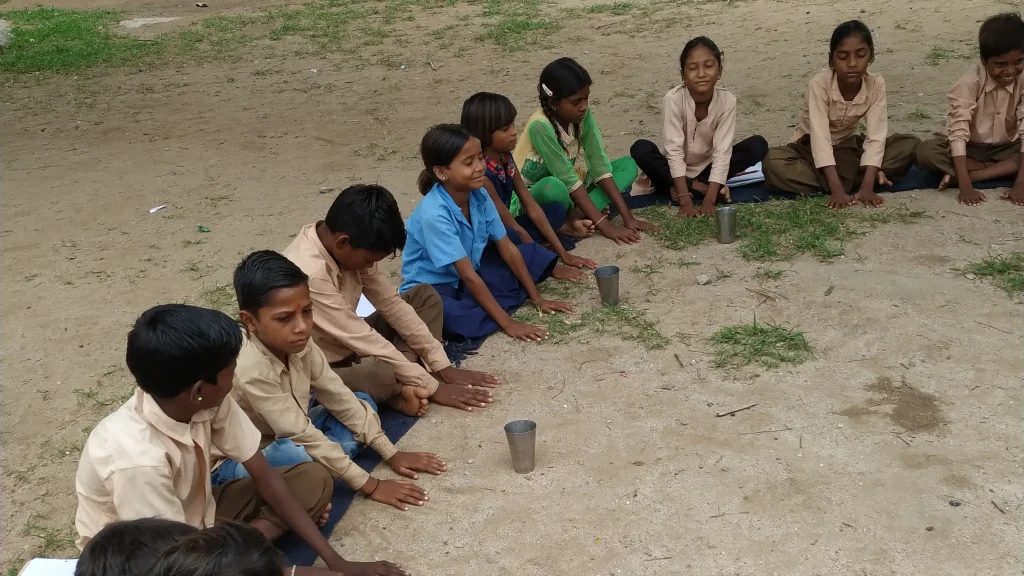
When humans genuinely feel the benefits, it doesn’t need to be mandated or enforced. The motivation to share it becomes natural and organic.
There have been many ripple effects of Hausla. As educators grow in well-being, mindfulness and resilience, they engage with their students in a more empathetic way.
Another teacher shared an experience of his response with a rickshaw driver, which goes like this: “One day, while riding my bike to school, I had a small accident with a Toto driver. I felt angry. I wanted to argue. However, I remembered the practice of pausing. I took a deep breath. I calmed myself and avoided a fight. That simple pause changed how I saw the situation and kept things peaceful.”
Despite its importance, well-being is often viewed as secondary to academic outcomes. For instance, parents sometimes question the value of activities like guided meditations, prioritizing traditional academics instead. Similarly, systemic issues like resource constraints and a focus on rote learning hinder innovation.
Approaching well-being in educational interventions
There are excellent curricula and resources for mental well-being and social-emotional learning. However, implementation often becomes complex.
Over the past eight (8) years, we have been working at the grassroots. We have been intervening at other levels of the system as well. Through this process, we have learned valuable lessons. These can help you avoid common early mistakes. We share here some suggestions that are useful to consider.
Integrated approach for well-being: Ninety minutes are not enough to cover the curriculum. Well-being combines a varied set of skills. These need repeated practice to become second nature.
Activities like classroom agreements should extend beyond one session. These must be revisited throughout the teaching learning process. This must take place in all school subjects, including subjects like math.
Educators must incorporate these practices daily to create a compassionate classroom. These must not remain just as rules on a wall. Similarly, regulatory practices such as resourcing, grounding, and attention strategies should become regular classroom rituals for achieving the desired outcomes.
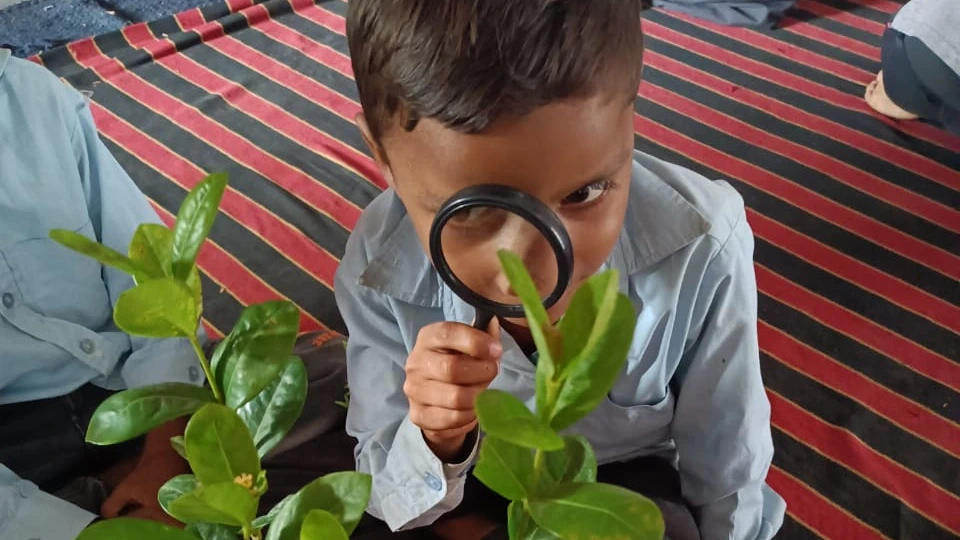
Focusing on community interventions: It is difficult to bring about change, by only working with children in the classroom or the school, to move toward sustainability. Therefore, we have started working with the children’s parents as well.
We undertake community visits four days a week. The aim is to meet each parent at least twice a month. In these meetings, we discuss issues related to the children’s learning and well-being with them.
We also try and stay at the children’s homes in the community at least five days a month. This helps us understand their daily routine. We also conduct parent-teacher meetings at least once a month.
Extensive training and support for educators: The SEE Learning Program offers a range of short and immersive training sessions for many individuals each year. However, the language and medium of the training may not always be suitable for on-ground facilitators.
The organization or school must identify an anchor who can absorb all the academic and structured training. These must then be broken down into smaller, context-specific needs for the organization and the school.
Simply conducting training is not enough. Additional support is necessary to ensure effective classroom facilitation.
This includes continuously reviewing lesson plans, observing the classroom, and providing growth-oriented feedback. Conducting mock sessions, deeply immersing in each learning experience, and creating a bank of activities to achieve the same learning outcomes are also critical aspects of this work.
Some students may need more time to master the skills. Integrating regular checkins and feedback loops for teachers also helps. In this context, weekly check-ins and group sessions are important. Sharing circles also provide a space for reflection, sharing challenges, building connections, and celebrating progress.
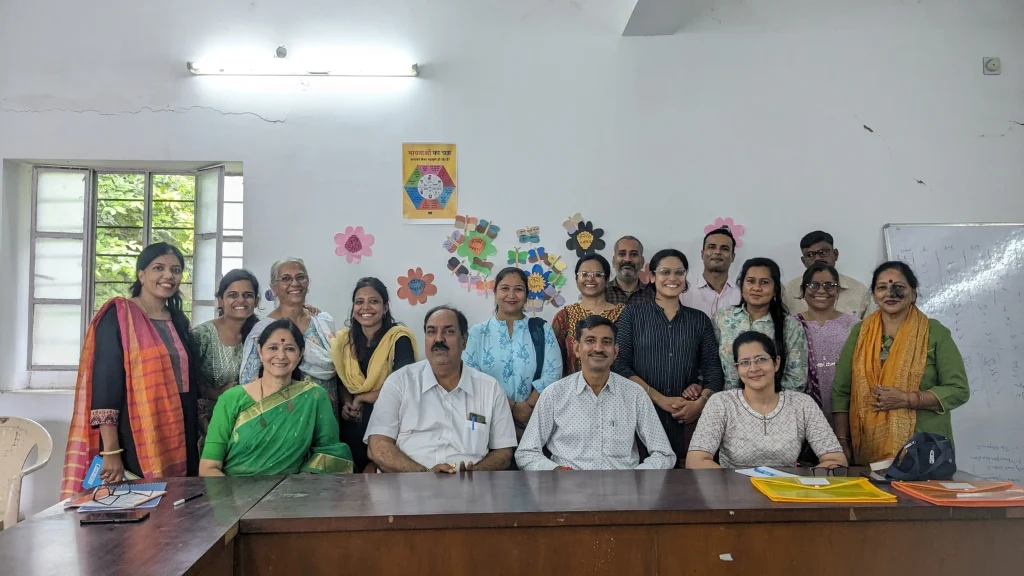
Creating a culture of well-being
Initiatives to nurture well-being must engage school leaders and administrators to actively participate in personal practices. This can help them further promote well-being practices.
Identifying and empowering teachers who can champion well-being initiatives within their schools is also critical. They can then go on to support their peers, lead activities, and serve as role models.
We must also include community-based initiatives for holistic well-being support. These must leverage local strengths.
At Kshamtalaya Foundation, we are deeply committed to our dream. This is to make well-being tools and skills accessible to every educator and child.
Together, we can transform schools into spaces of growth, connection and joy. This will enable individuals to unlock their fullest potential.


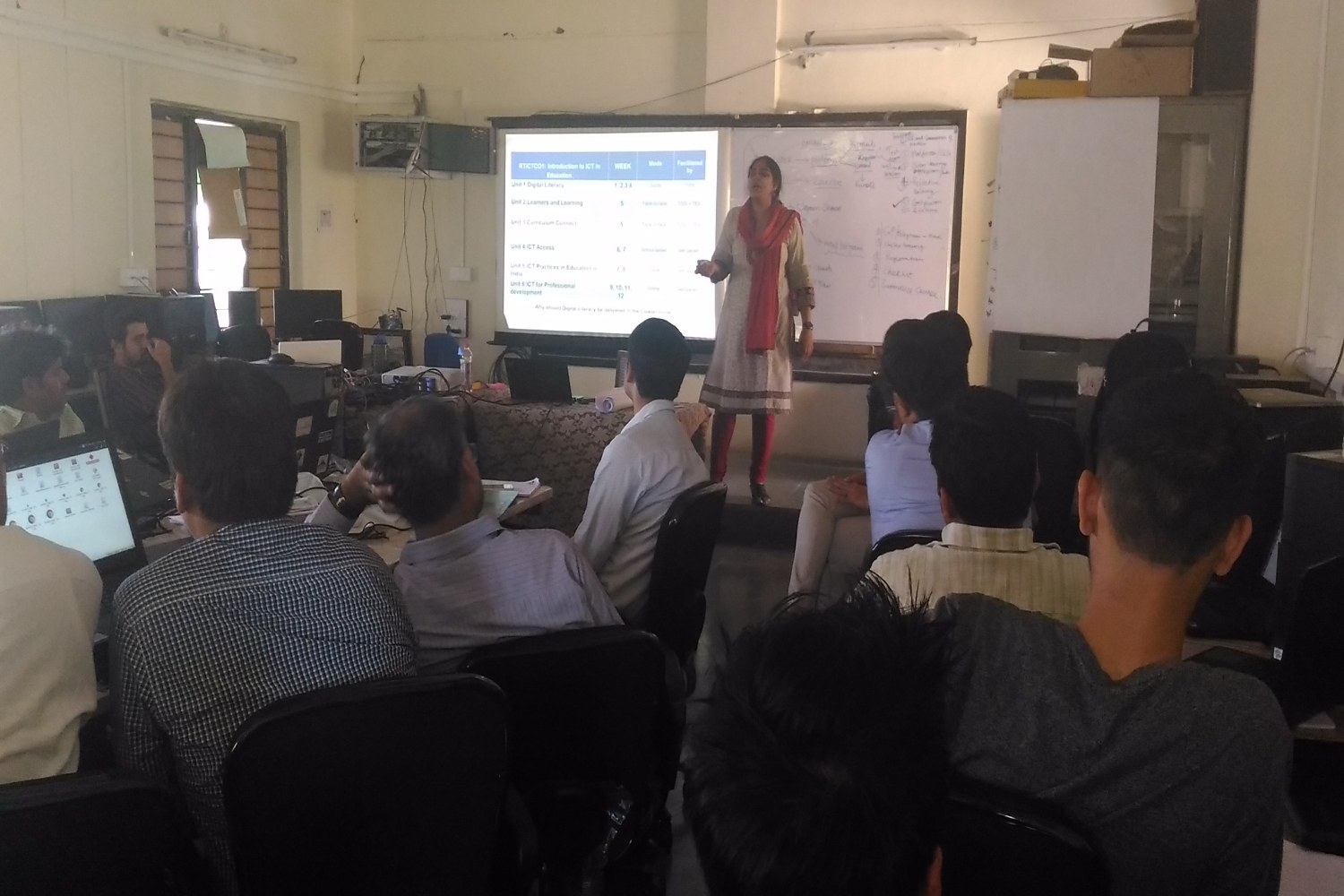
No approved comments yet. Be the first to comment!